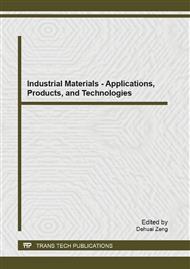p.283
p.287
p.292
p.298
p.303
p.309
p.314
p.318
p.327
Experimental Bond Performance of CFRP Anchors
Abstract:
In this paper, the technique: CFRP wrapping combined with CFRP anchors for RC structural member retrofit and its design criteria are introduced for a start. Experimental investigations [1,2, had been adopted and developed the use of CFRP anchors to provide confinement and improve square jacketing behaviors as well as prevent premature debonding for CFRP wraps. To fully determine the anchorage performance of CFRP anchor, a total of forty five specimens for the fiber bolt and the spread tail, two important components in CFRP anchor, were constructed and tested. The experimental results of failure modes were then discussed. For the fiber bolt, an analytical model for single metallic anchor and the best-fit equivalent bond stress were assessed with the test strength. The proposed design strength was also compared and validated the confidence. For the spread tail, the anchoring strength was tested limited due to the fiber rupture even more than the adhesive interface failure. As a result, the influence for the strength capacity of CFRP anchor was determined. The test data are helpful to analyze the behavior and modify the design criteria for the RC member retrofitted by the CFRP anchor technique.
Info:
Periodical:
Pages:
303-308
Citation:
Online since:
August 2013
Authors:
Keywords:
Price:
Сopyright:
© 2013 Trans Tech Publications Ltd. All Rights Reserved
Share:
Citation:


